Exploring the Solar System for Kids
Introduction
The Solar System
The Solar System is a captivating subject that ignites the imagination of young learners. Let’s embark on an exciting journey to explore the wonders of the Solar System and unravel its mysteries in a way that is engaging and educational for kids.
Analogy of Definition
What is the Solar System?
The Solar System is a vast cosmic neighborhood that comprises the Sun, planets, moons, and other celestial bodies. It is like a bustling community where each member plays a unique role in the cosmic dance of the universe.
Method
The Sun
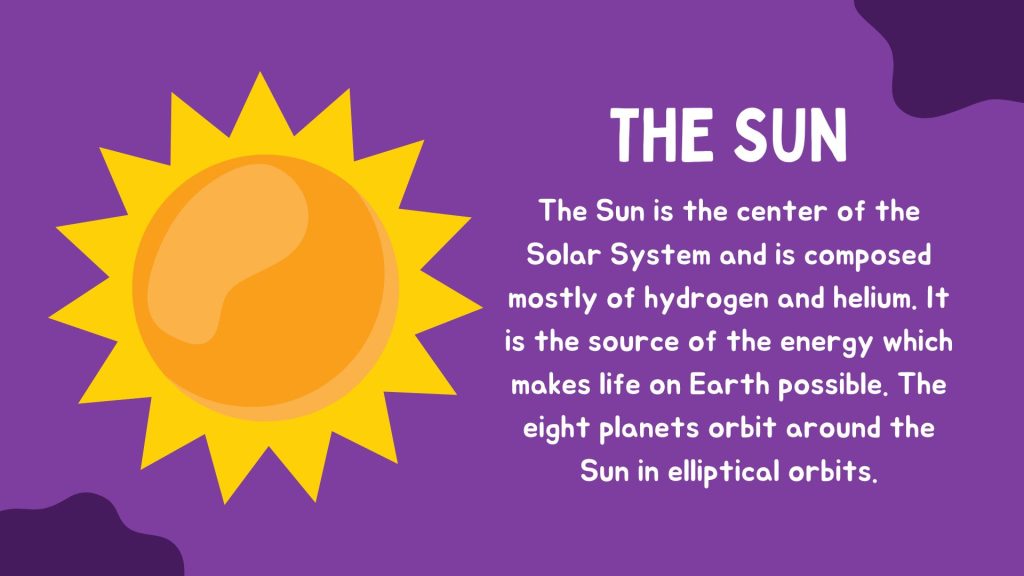
At the heart of our solar system lies the Sun, a colossal sphere of glowing gases that dominates with its immense size, accounting for over 99% of the solar system’s mass. Composed mainly of hydrogen and helium, the Sun’s core reaches temperatures of millions of degrees Celsius, where nuclear fusion reactions generate vast amounts of energy. This energy radiates outward through its layers, including the visible photosphere, where it streams into space as sunlight. The Sun’s immense size—approximately 1.4 million kilometers in diameter—defines it as a medium-sized star. Essential for sustaining life on Earth, the Sun’s energy drives our climate, powers photosynthesis, and supports technological advancements like solar energy. Its dynamic nature, marked by an 11-year solar cycle of sunspots and solar flares, influences space weather and communications. Understanding the Sun’s structure, composition, and role elucidates its profound significance in our solar system and beyond.
The Planets of the Solar System
From the scorching inner planets to the majestic gas giants and distant icy realms, each planet offers unique landscapes and mysteries waiting to be explored. Let’s delve into the characteristics and fun facts of each celestial body that calls our solar system home:
Mercury
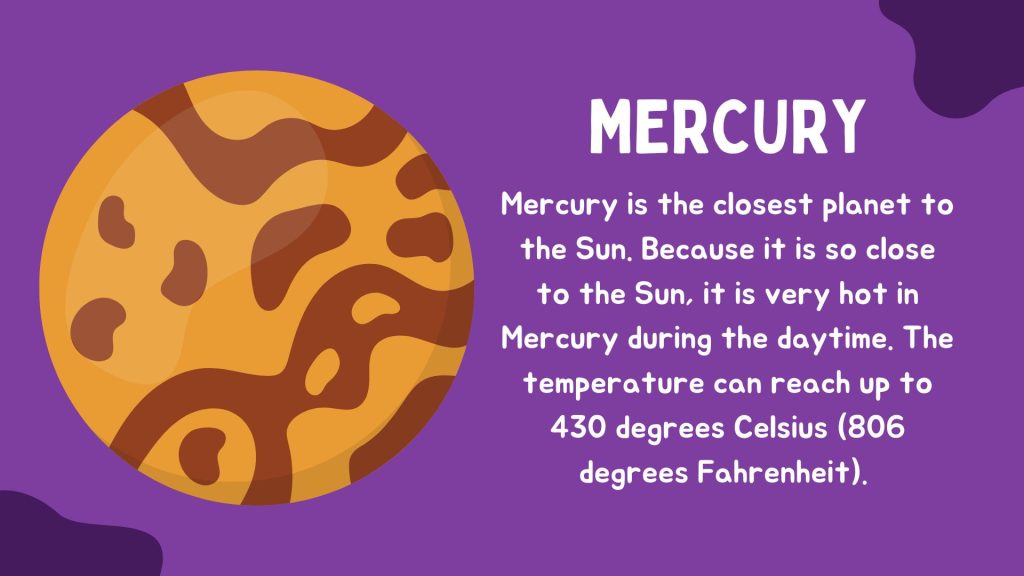
Closest to the Sun and named after the swift Roman messenger god, Mercury zooms around our star at a distance of about 57.9 million kilometers (36 million miles). It’s a small, rocky world with extreme temperature swings—from a blistering 427°C (800°F) during the day to a frigid -173°C (-280°F) at night due to its thin atmosphere.
Venus
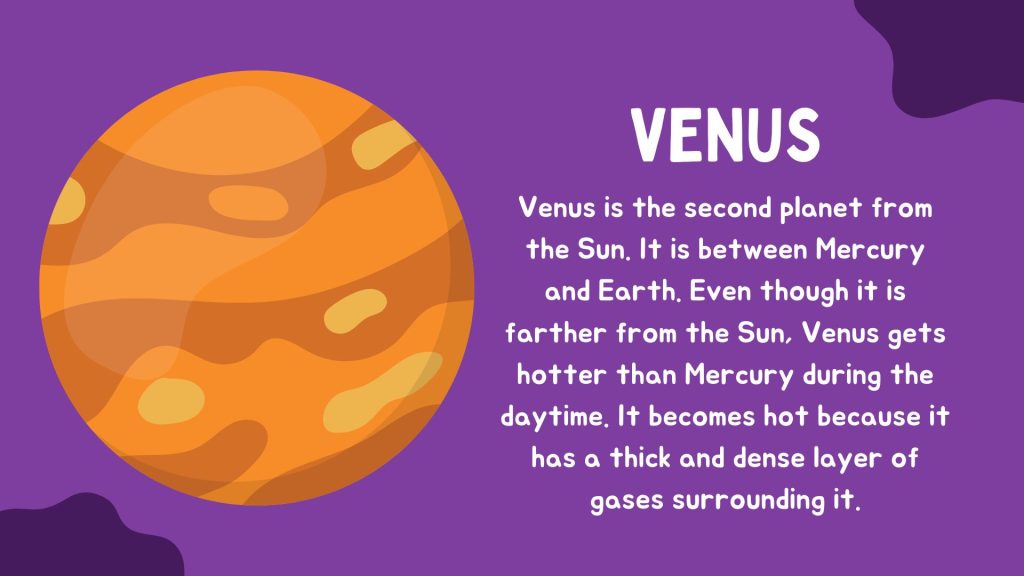
Known as Earth’s “sister planet” due to its similar size and composition, Venus orbits the Sun at approximately 108.2 million kilometers (67.2 million miles). Despite its beauty as the brightest planet in our sky, Venus is a hostile world with a thick atmosphere of carbon dioxide that traps heat, resulting in surface temperatures that can reach a scorching 471°C (880°F).
Earth
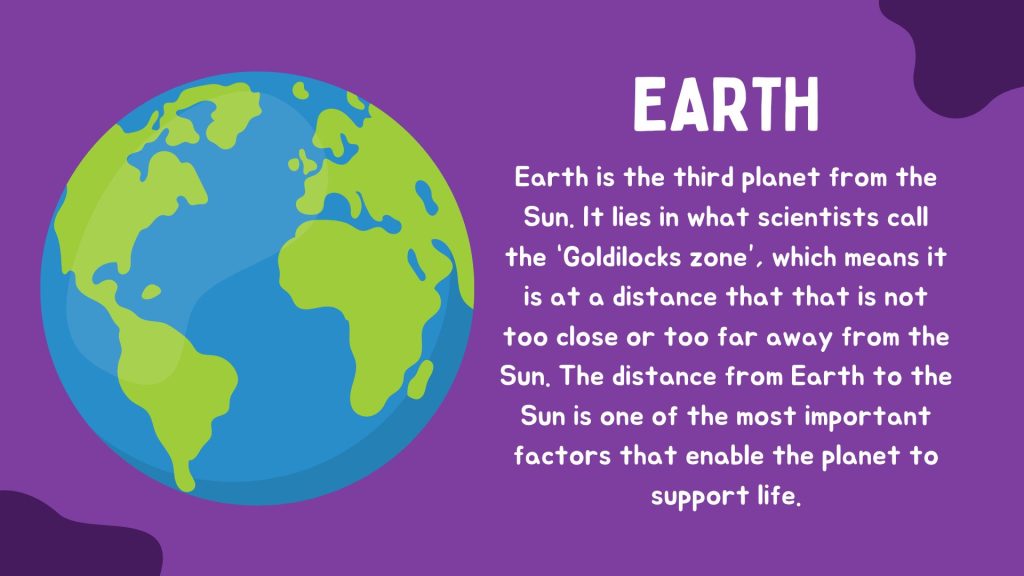
Our beloved blue planet, Earth, orbits the Sun at an average distance of about 149.6 million kilometers (93 million miles). It’s the only known planet to support life, featuring vast oceans, diverse ecosystems, and a protective atmosphere. Earth is uniquely characterized by its dynamic weather systems and stunning natural landscapes.
Mars
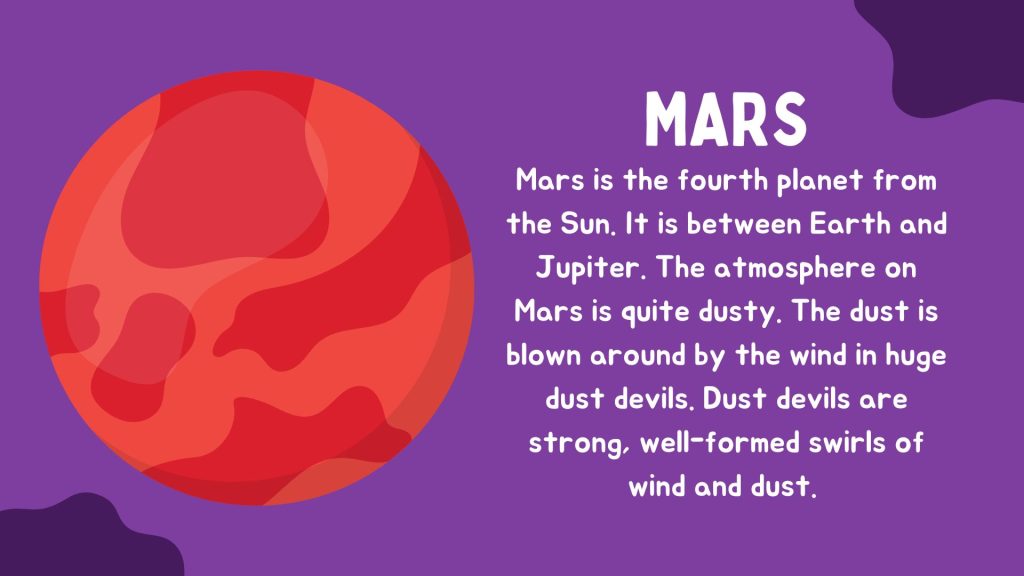
Often called the “Red Planet” due to its rusty red appearance, Mars orbits the Sun at a distance of approximately 227.9 million kilometers (141.6 million miles). It has a thin atmosphere, polar ice caps, and remarkable features like the largest volcano in the solar system—Olympus Mons. Mars continues to captivate scientists as a potential future destination for human exploration.
Jupiter
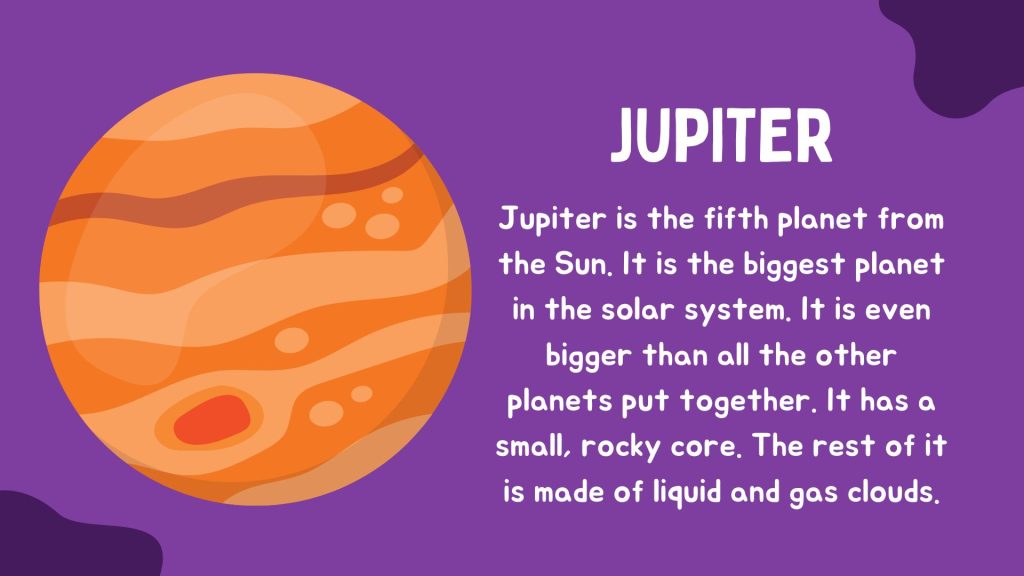
As the largest planet in our solar system, Jupiter orbits the Sun at a distance of about 778.5 million kilometers (483.8 million miles). This gas giant boasts a mesmerizing system of colorful bands and a dynamic atmosphere filled with storms, including the famous Great Red Spot—a massive storm larger than Earth that has been raging for centuries.
Saturn
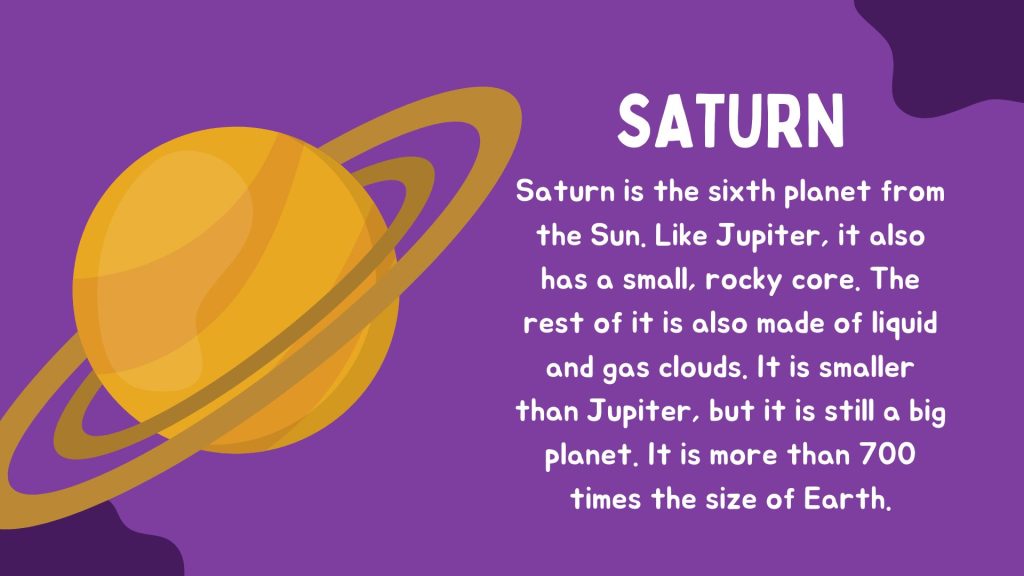
Famous for its stunning rings made of icy particles and rock fragments, Saturn orbits the Sun at approximately 1.4 billion kilometers (886 million miles). It’s the second-largest planet and has a diverse family of moons, with Titan being the largest. Saturn’s rings, although delicate and complex, are made up of billions of individual pieces.
Uranus
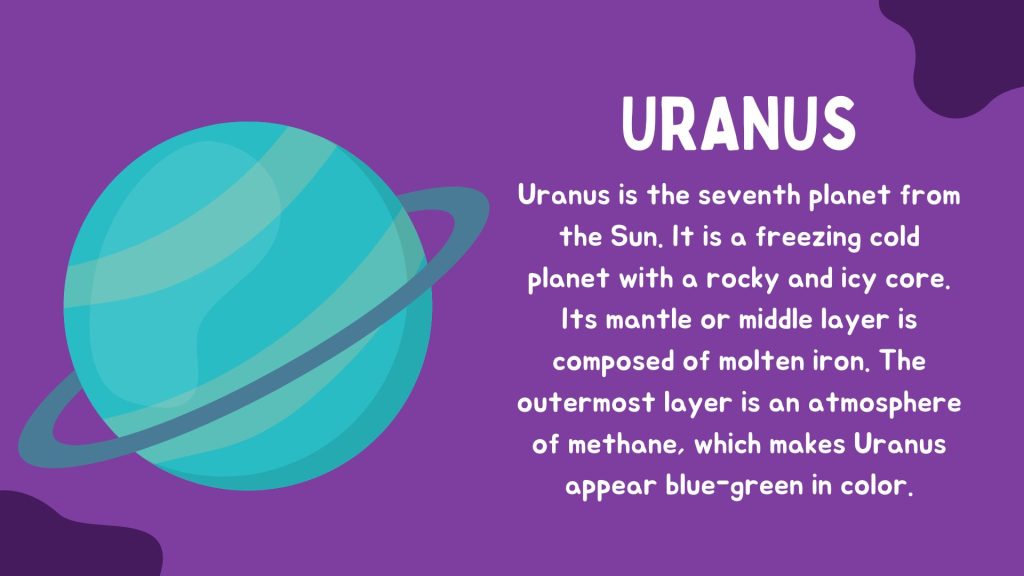
Uranus is an ice giant with a distinctive bluish-green hue due to methane in its atmosphere. It orbits the Sun at a distance of about 2.9 billion kilometers (1.8 billion miles) and is unique among the planets as it rotates on its side. Uranus has a system of faint rings and numerous moons, each with its own intriguing characteristics.
Neptune
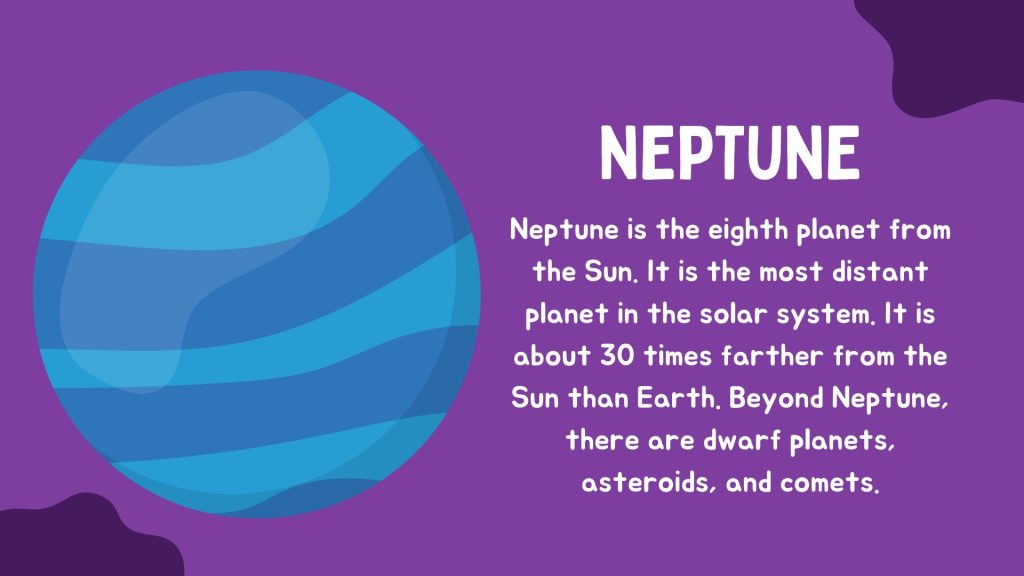
The farthest major planet from the Sun, Neptune orbits at a distance of approximately 4.5 billion kilometers (2.8 billion miles). This icy giant has a deep blue coloration from methane in its atmosphere and features a turbulent atmosphere with high-speed winds and dynamic storms. Neptune has several rings and moons, including Triton, a captured Kuiper Belt object.
Examples
Exploring the Solar System Model
Step 1: Gather materials such as styrofoam balls, paint, and a wooden dowel.
Step 2: Paint the styrofoam balls to represent the planets and assemble them in the correct order around the Sun model.
Step 3: Label each planet and discuss their unique traits with kids to enhance their understanding of the Solar System.
This example demonstrates a hands-on activity for kids to create a model of the Solar System, fostering a deeper understanding of the planets and their arrangement around the Sun. By engaging in this activity, kids can visualize the relative sizes and distances of the planets, making the concept of the Solar System more tangible and memorable.
Quiz
Tips and Tricks
1. Solar System Scavenger Hunt
Activity: Create a list of clues related to the planets and hide them around the house or yard for kids to find.
2. Planet Fact Cards
Activity: Create flashcards with facts about each planet and engage kids in a game to match the facts with the corresponding planet.
3. Stargazing Night
Activity: Plan a stargazing night to observe the Moon, planets, and constellations with kids using a telescope or binoculars.
Real life application
Story: The Cosmic Adventure of Mia and Alex
Mia and Alex, two young explorers, embarked on a cosmic adventure to learn about the Solar System and its wonders.
Adventure 1: The Planetarium Visit
Mia and Alex visited a planetarium where they experienced a captivating show about the Solar System, learning about the planets and their unique features.
Adventure 2: The Space Camp Challenge
The young explorers attended a space camp where they engaged in hands-on activities such as building rockets and learning about space exploration.
Adventure 3: The Solar System Quiz
Mia and Alex participated in a Solar System quiz competition, showcasing their knowledge about the planets, moons, and other celestial objects.
FAQ's
Like? Share it with your friends






